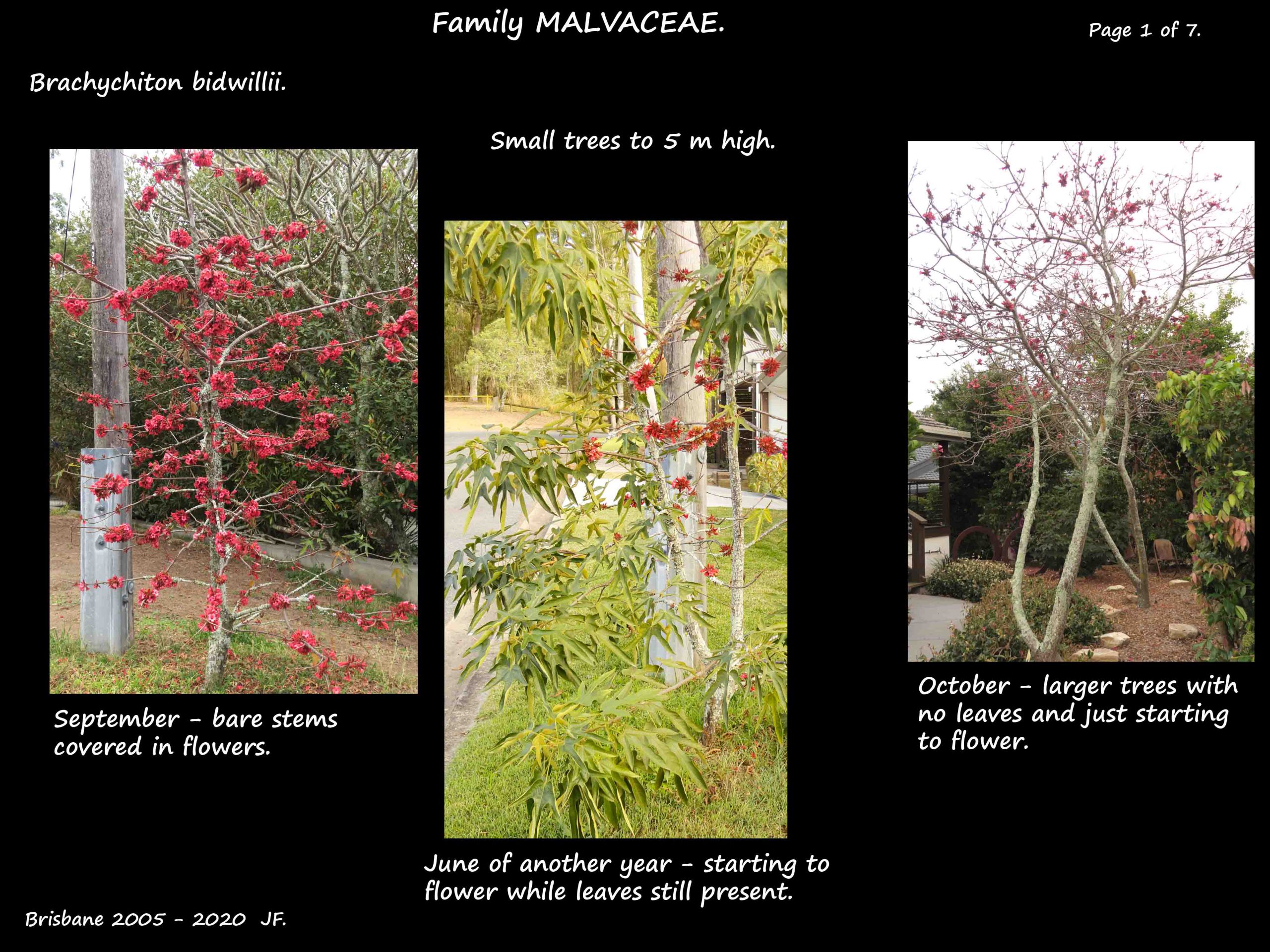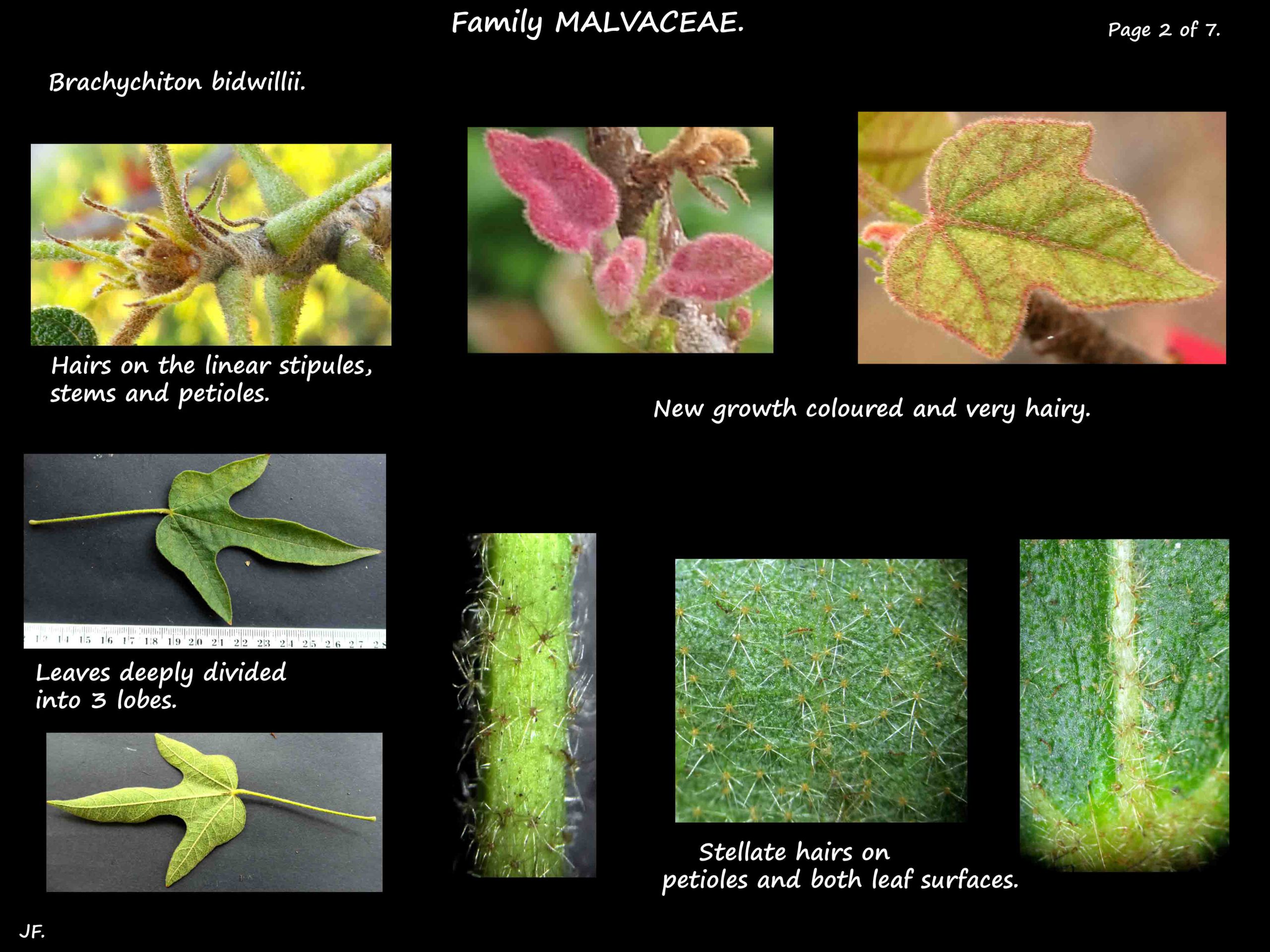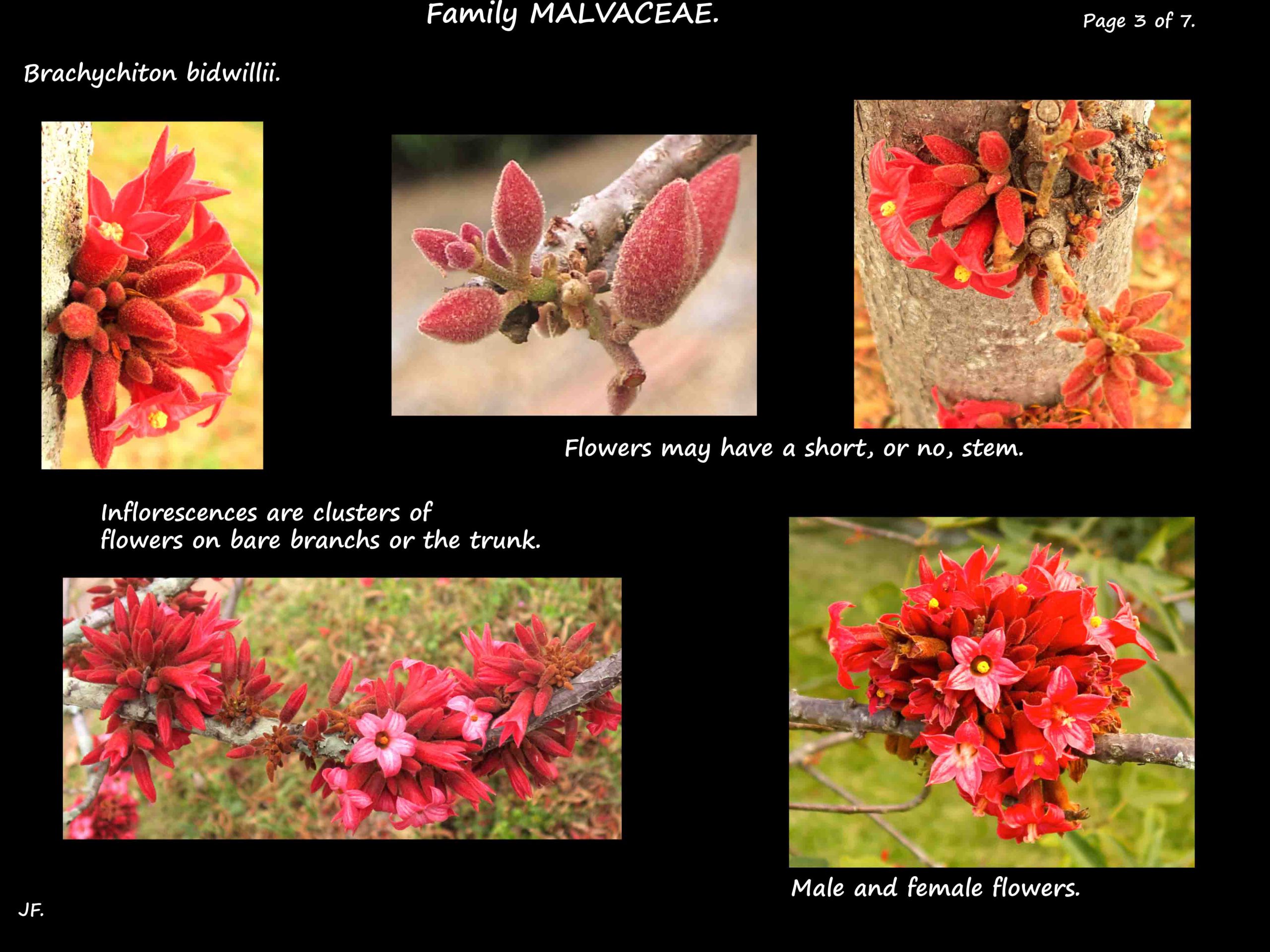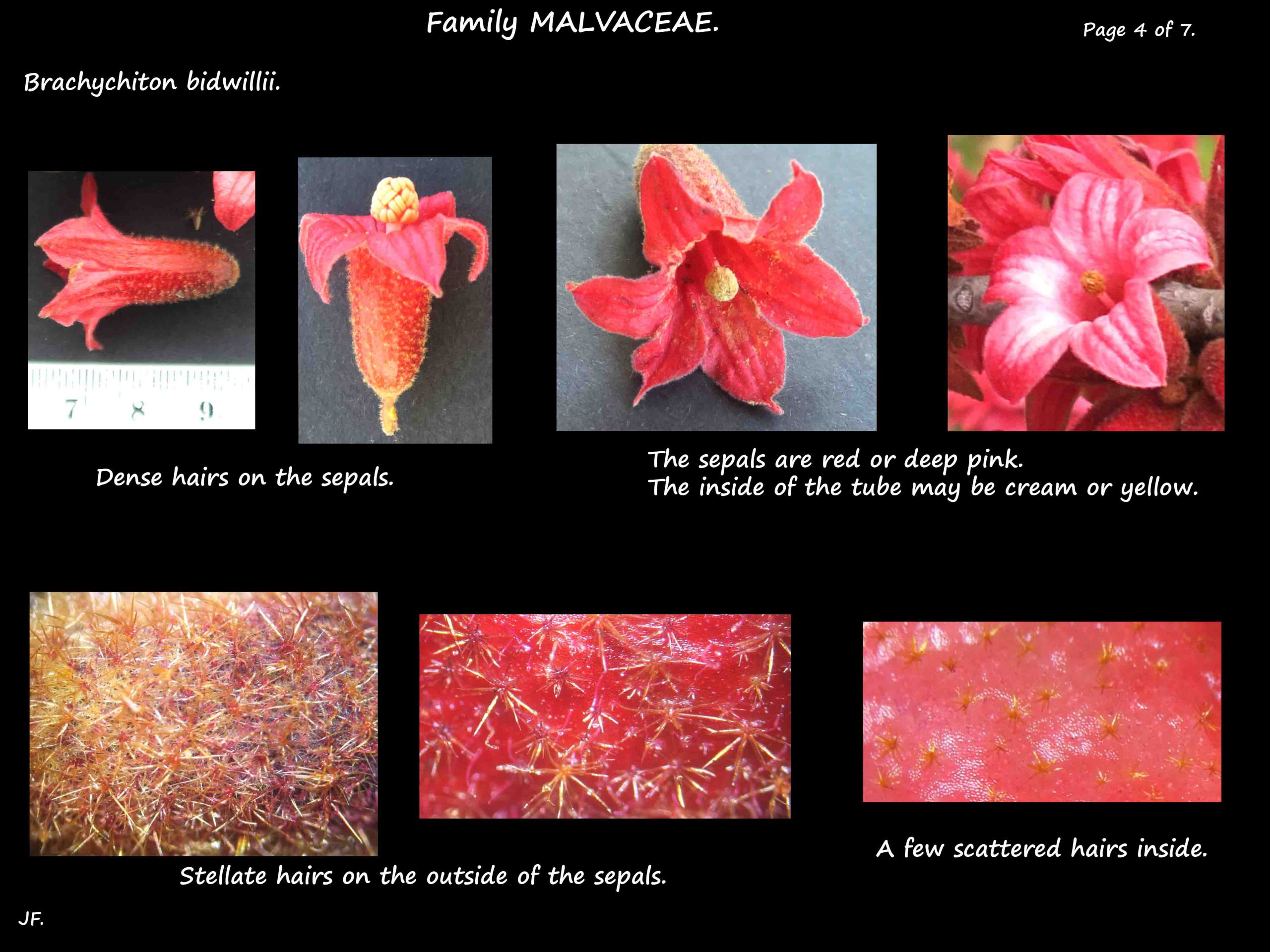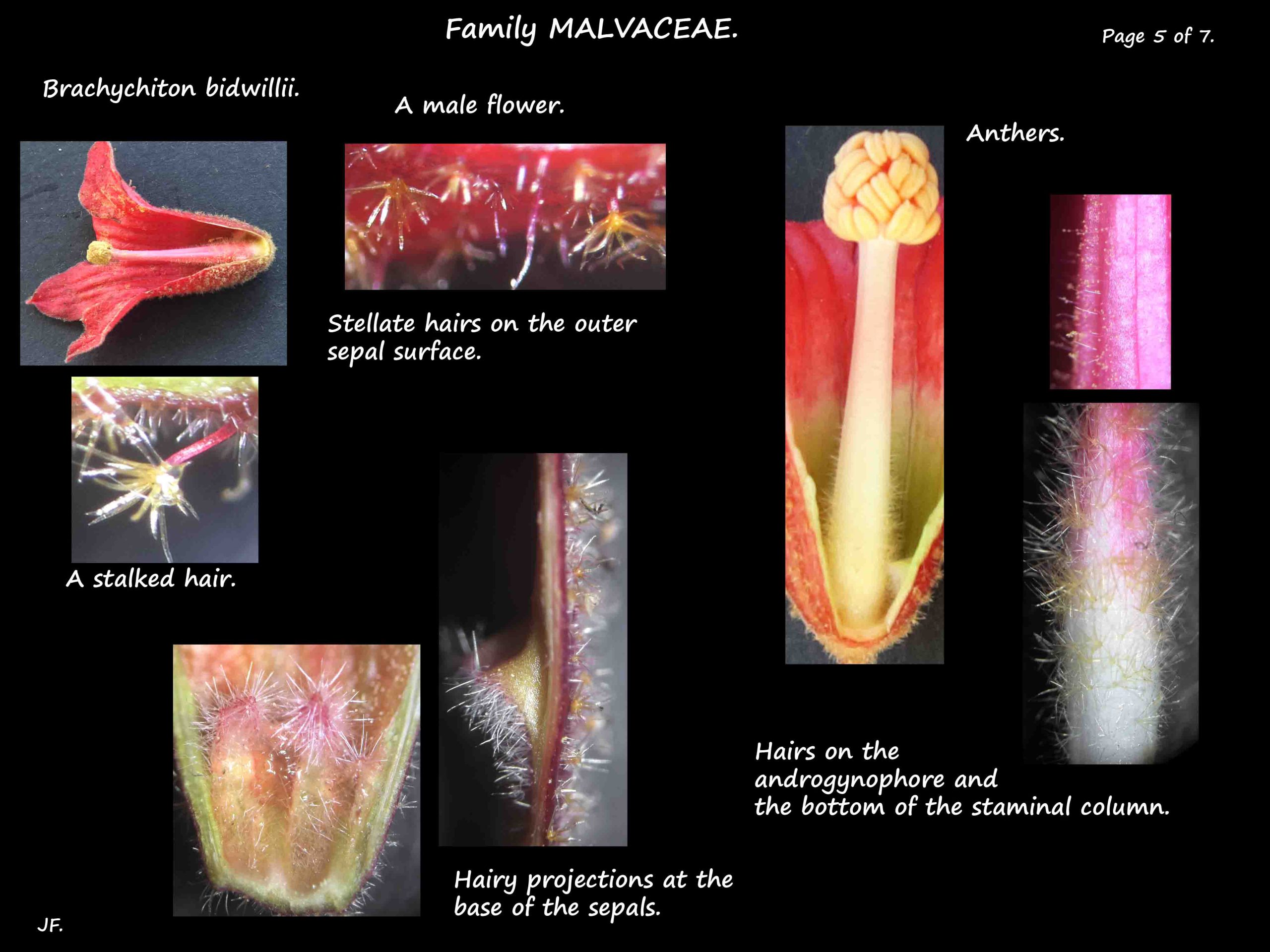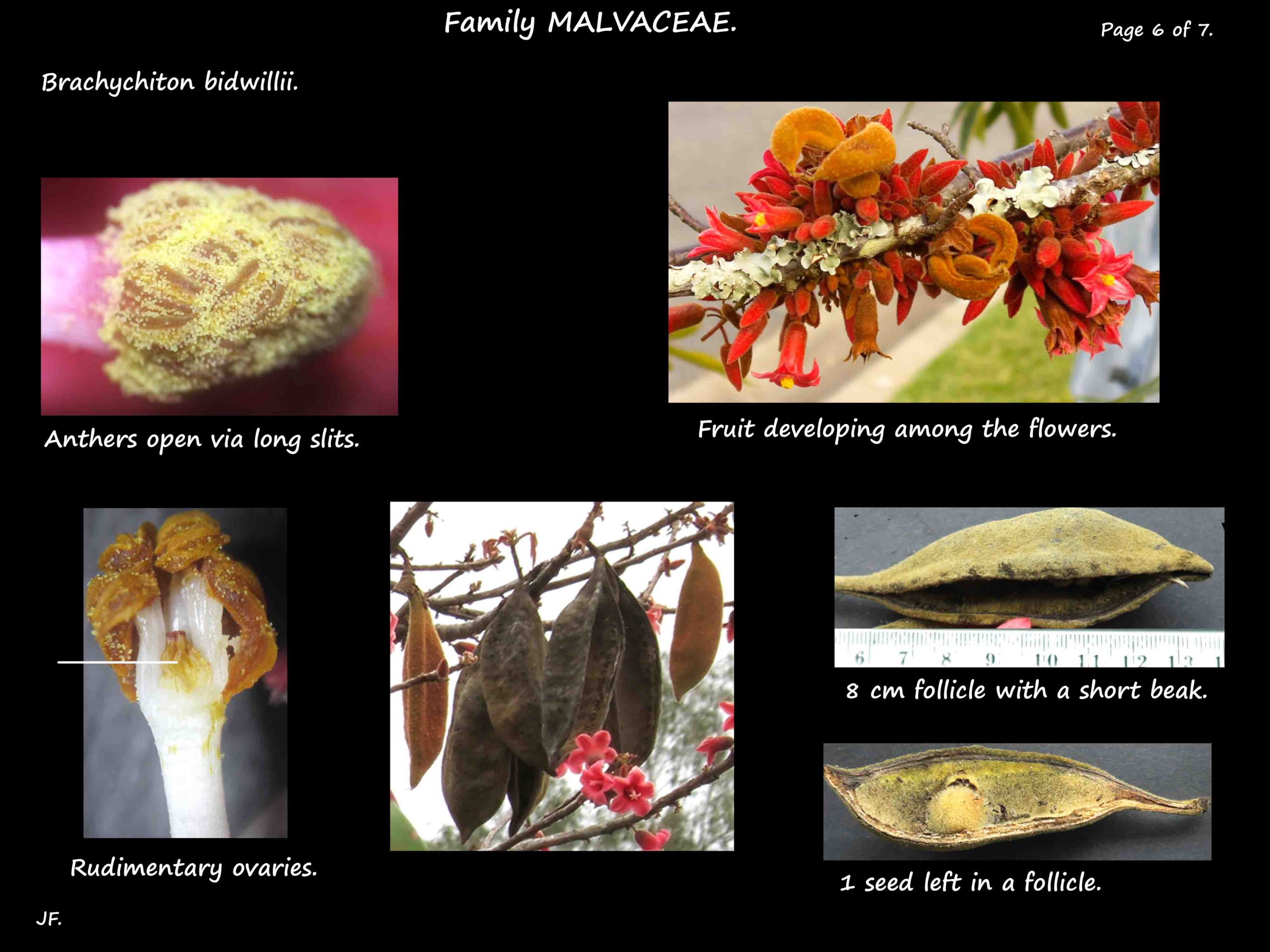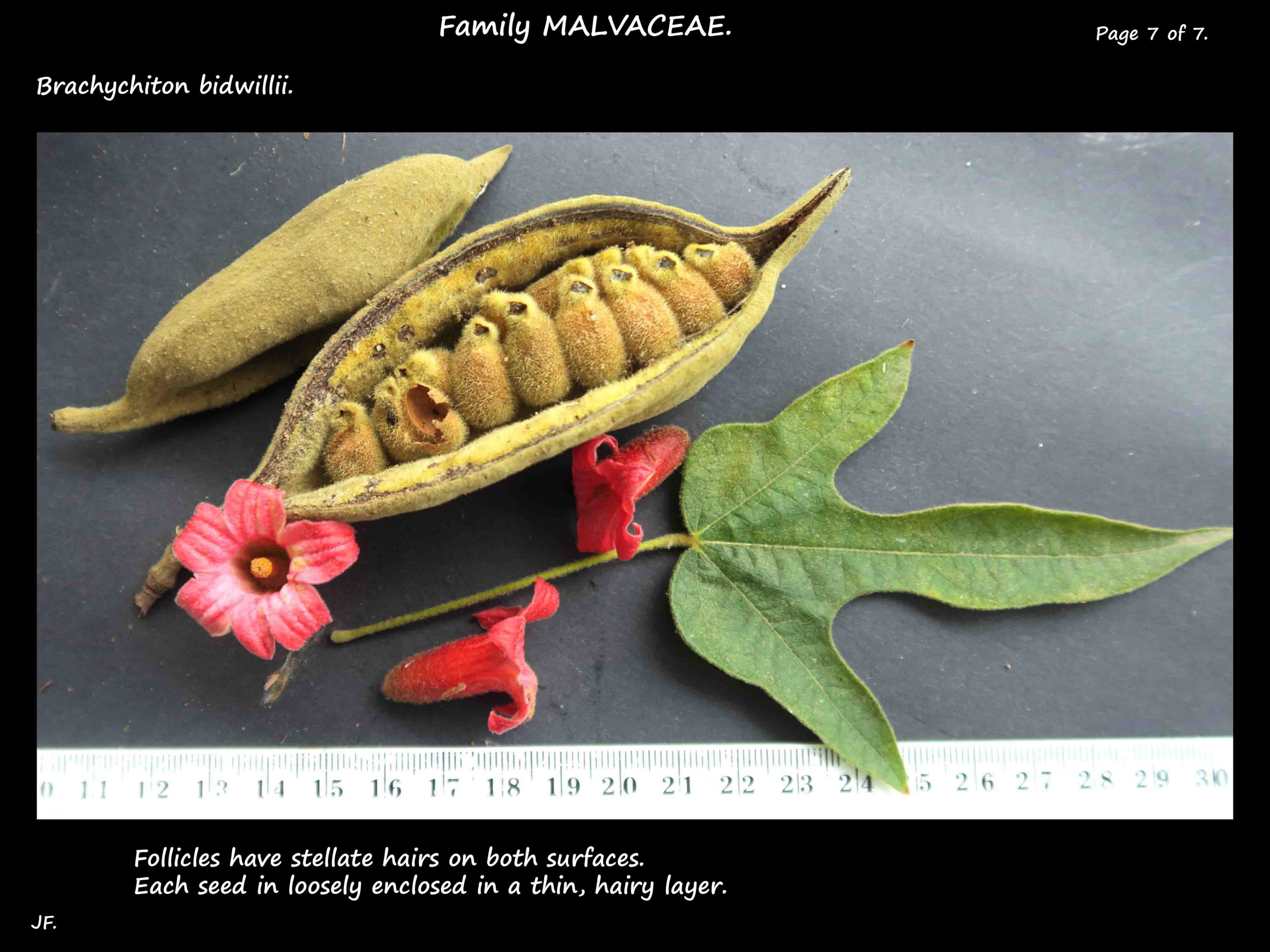Brachychiton bidwillii.
Previously known as Sterculia bidwillii.
Endemic to Queensland it is commonly known as the Dwarf Kurrajong.
They are shrubs or small deciduous trees up to 4 or 5 m high.
The pale grey or brown bark can be finely fissured or smooth.
Many parts are hairy including the small branches.
Alternate leaves, on petioles up to 13 cm long, are deciduous.
Linear stipules, with stellate hairs, can be nearly 2 cm long.
Adult blades are up to 25 cm long and almost as wide.
They are deeply divided with 5 (3 – 7) lobes.
The lobe tips are pointed.
The dull green upper surface has a few simple and stellate hairs.
The lower surface is paler and densely covered in rust-coloured, stellate hairs.
Inflorescences are tight clusters of flowers on bare branches.
The flowers have short or no stalks.
Each plant has male and female flowers.
There are 2 nectaries, around 2 mm long, at the base of each sepal lobe inside.
The bell-shaped flowers have no petals but deep pink to reddish sepals.
The tube may be yellow or cream inside.
Flowers are about 3 cm long and have 5 (6) lobes on the sepal tube.
There are dense stellate hairs externally.
There are a few hairs on the lobes inside and none in the tube.
There is an androgynophore.
Male flowers have about 20 stamens.
The filaments are fused into a staminal column about the length of the sepal tube.
The yellow anthers, on a few mms of free filament, are about 2.5 mm long.
The anthers, opening via long slits, hide the rudimentary ovary.
Female flowers have 5 free carpels.
There are 20 or so staminodes, under 2 mm long, around the base of the ovaries.
There are a few brown, stellate hairs on the ovaries.
The 1 cm long styles hold stigmas about 4 mm long.
The follicles, about 10 cm long, are covered in rust-coloured hairs.
They are boat-shaped with a short beak at the tip.
The stellate hairs inside are larger than those on the outside.
Each follicle has 20 to 30 seeds.
J.F.
